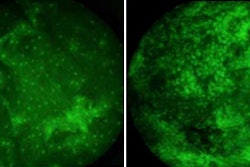The National Institute of Dental and Craniofacial Research (NIDCR), part of the National Institutes of Health, used $101.8 million in American Recovery and Reinvestment Act funds over the last two years to fund numerous dental, oral, and craniofacial research projects.
The institute provided support for the following:
- 141 new or competing two-year research and research training grants
- 128 administrative supplements to scientists with active NIDCR grants
- Research projects in 33 states throughout the U.S.
In fiscal 2009, the NIDCR committed $98.8 million, or 97.8%, of its Recovery Act funds to bolster science and the economy in the U.S. In fiscal 2010, the institute issued about $3 million, primarily to support smaller research grants at institutions or areas of the country that historically have not been major recipients of NIH funding.
Dental, oral, and craniofacial research also benefited from $10.8 million provided by NIH Recovery Act central funds to support or cofund 29 NIDCR-issued awards.
Some of the institute's investments include:
Oral cancer: Recovery Act funds were instrumental in establishing the Oral Cancer Genome Project, a collaborative research effort that has great potential to identify the early genetic changes that drive tumor development. The project will do so by first comprehensively defining the genetic changes that occur in oral squamous cell carcinoma, the most common oral cancer, thus facilitating follow-on studies to validate the best leads as warning signs of a developing tumor. Another Recovery Act grant will allow a research team to further develop a programmable nano-biochip for rapid detection of premalignant and malignant oral cancers.
Sjögren's syndrome: With its Recovery Act funding, NIDCR is supporting a multistage project to better define the genetic components of conditions such as Sjögren's syndrome. Several new projects will study the molecular and cellular changes that underlie the onset and development of Sjögren's syndrome, seeking new ways to rescue damaged salivary glands.
Restorative materials: Recovery Act funds are helping to create more durable, longer-lasting dental restorative materials. One study will attempt to develop a high-strength tooth-colored composite material with a self-healing capacity to extend the filling's lifespan. Two other grants will develop novel, nano-sized dental materials. Because of their minute size and high bioactivity, these materials have great potential to improve the composition of dental restoratives and also to help remineralize early decay before a filling is needed.
Oral health behaviors: Building on past research successes that link primary care physicians and specialty care, Recovery Act funds support the testing of effective ways for oral health providers to link patients with specialty substance abuse care. Three grants are testing methods to screen for substance use in general dental clinics, equipping providers to give brief advice about quitting and making appropriate referrals for treatment. Two of these grants target adult patients, and one focuses on adolescent patients. Two other grants are testing methods to use electronic medical records to facilitate better screening, brief interventions, and referral to substance abuse treatment in dental offices. Another grant evaluates methods to connect oral health services and state tobacco quit lines, or toll-free telephone cessation services.
Copyright © 2010 DrBicuspid.com



















